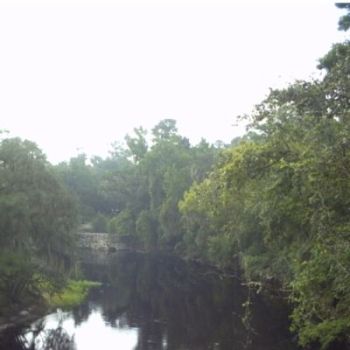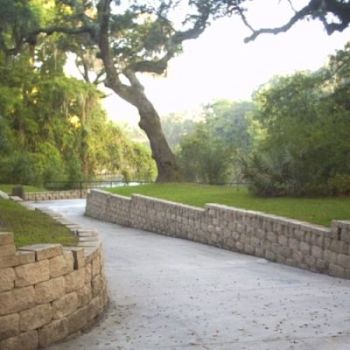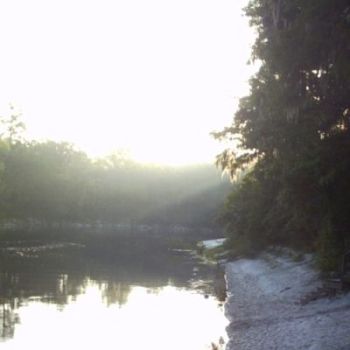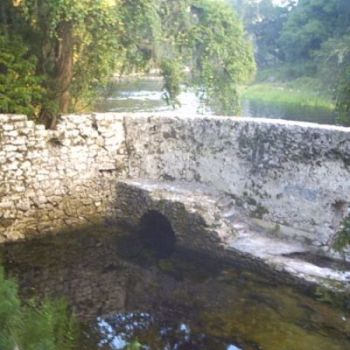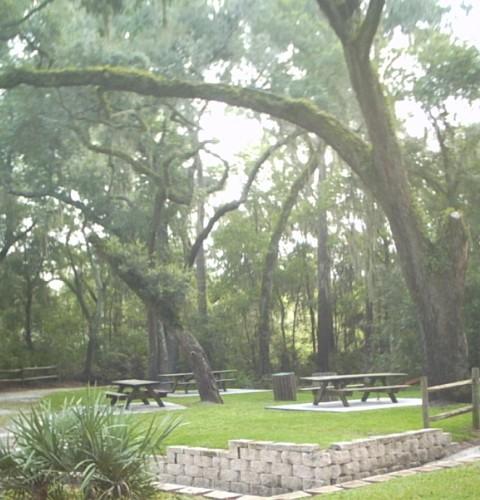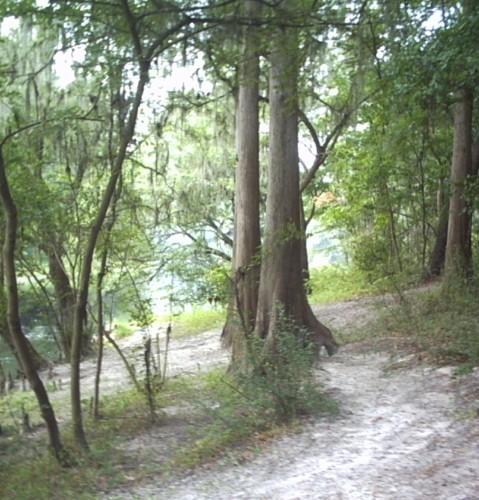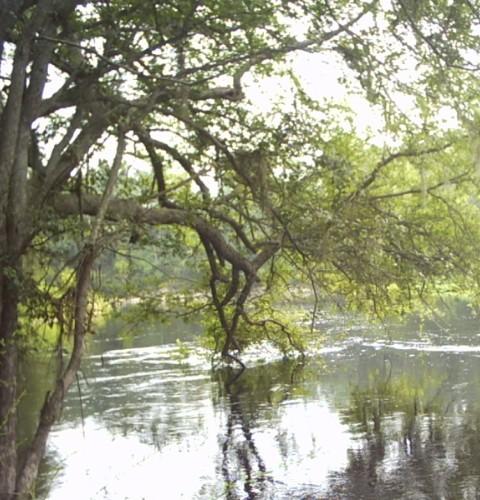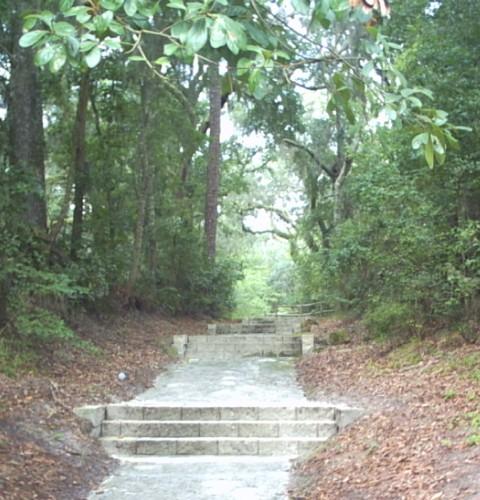
Just about five miles north of I-10 in north central Florida is a hidden recreational area. It is located on highway
129 near Live Oak, Florida. The old, steel bridge is still standing where highway 129 used to cross the river. The
bridge is now closed to vehicle traffic, but you can still walk on to it and get a great view of the river. The steel
is now rusting and the bridge is no longer used. A new bridge was built about a quarter mile farther down the river.
The area just up the river from the old bridge was once a famous recreational area. Just off the side of the river is
a cold spring which bubbles up from the rocks on the riverside. A springhouse was built over the bubbling spring in the
mid 1800s. The foundations of the springhouse are still in place. The land around the spring and running along the river
has been acquired by Suwannee River Water Management District and is open to the public.
The foundations of the springhouse can be seen from the bridge. In the 1800s the water from the spring was rumored to
have healing properties and people flocked to the spring to soak in the cold water. From about the time of the civil
war until the 1920s there was a succession of four wooden hotels built near the spring. A bath house and many private
cottages were also on the site. The last of the wooden hotels burned down in 1925 and was never rebuilt. In it's
prime the fame of the spring was so great that a special railroad spur was built to bring passengers to the area. With the
improvement of roads and the decline of the railroads, the spur was discontinued and the fame of the resort faded. Today
the foundations of the springhouse are all that remain of this once thriving recreational area. In recent years, since
being acquired by a state agency, the area around the spring has been cleaned up and is once more accessible to the public.
Block lined paths winding under large, moss hung oak trees lead down to the spring. The area is open from 8:00 AM until
7:00 PM daily. No overnight camping is allowed, but the area is open to swimming, biking, hiking, fishing, and picnicking.
Posted rules on a sign at the park entrance state that all dogs must be on a leash to be in the area. There is a port-o-let
located near the spring, but no running water or electricity is available. Trash receptacles have been placed conveniently
close to the picnic area. This recreational area is remote and mostly used by local citizens. There are usually no large
crowds. It is the ideal place to go for a family outing. The hiking trails wind along the banks of the historic Suwannee
River and the views of the river through the native foliage are breath taking. Although the trails are kept clear, the rest
of the area is in a natural state.
The Suwannee River flows from the Okeefenokee Swamp to the Gulf of Mexico. The water of the river is very clean, but is
stained a brownish, tea color by the vegetation of the great swamp. Mixed in with the high, rock walls of the river are
clean white sandbars. The sandbars create small, beach like areas at every curve in the river. The river has many types of
fresh water fish. Catfish, bass, bream, and redbellies are just a few of the fish which swim in the tea colored water.
Many native animals live near the river, which is a convenient source of water. Cat squirrels play in the giant oaks along
the river banks and you can hear their barking cries as they run through the branches over the hiking trails. Use caution
when taking the many trails. There is poison ivy and other hazardous plants growing wild along the trails.
The spring bubbles up through several large holes in the rock river bank. The spring is completely enclosed by rock
walls. The walls are built of the rock from the river bank. Water from the spring is very clear and cold. It runs into
the river through openings in the rock walls of the springhouse. There is no admission charge to the spring or the area
surrounding it. Visitors may bath in the spring or swim in the river just outside the springhouse walls. Several small
sandbars are near the spring for sunbathing or just laying in the shade, watching the river flow past. Be sure to bring
plenty of water. During the summer it gets very hot and no running water is available in the area. No large signs are at
the entrance to the spring. It would be difficult to find for someone not familiar with the area. It is near where
highway 129 crosses the river. You can stop at the convienience store near the river and ask for directions. Make sure
you don't miss visiting this beautiful natural wonder if you are passing through the area.
